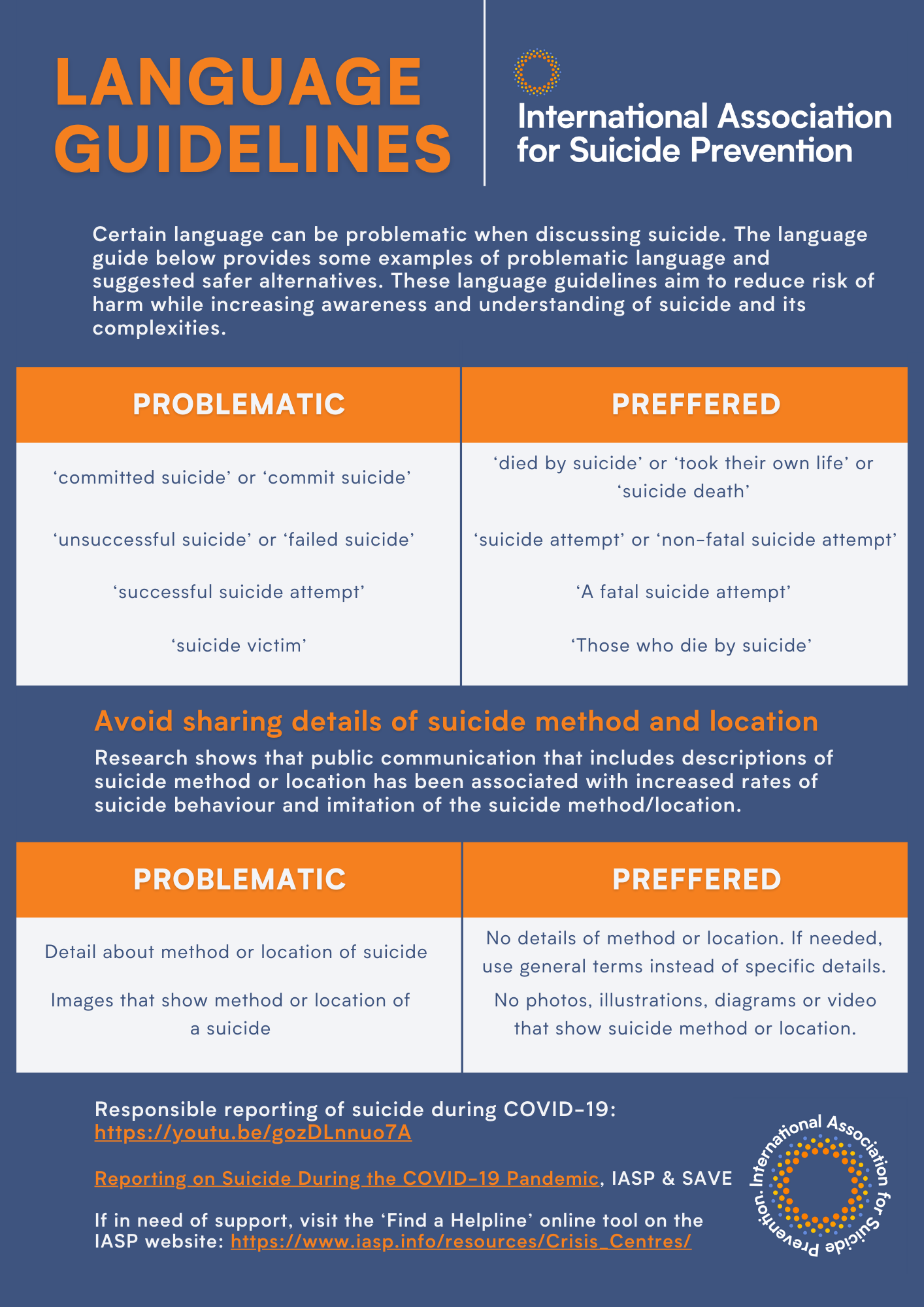The Language of Suicide
An important objective of suicide prevention is to remove the stigma associated with suicide and mental health issues so that people will be more likely to seek the help they need. One of the ways we can do this is to be conscious of our use of language. The IASP language guidelines aim to reduce the risk of harm while increasing awareness and understanding of suicide and its complexities.
The term “committed suicide” implies a level of criminality while “completed suicide” implies earlier attempts when there may have been none. Both terms (committed and completed) perpetuate the stigma associated with suicide and are strongly discouraged. Using the word “successful” or “failed” to describe suicide is also discouraged. Terms such as “died by suicide” or “died of suicide” as well as “suicide death” and “fatal suicide behaviour” are recommended. Sensitive use of suicide-related language is appreciated.
It is expected that the issues and solutions of language usage will continue to evolve as the field of suicide prevention continues to grow. Acknowledging that many within IASP’s network and reach have English as a second, third or other language and that language is deep-rooted, it is important that IASP promote a guide to language that does not vilify those who use terminology we advocate against but encourages the adoption of preferred terminology.



